Creating a Night Garden: Plants That Glow in the Dark
Imagine stepping into your garden at night, greeted by a soft, ethereal glow that dances among the leaves and flowers. This is the enchanting allure of a night garden, a space designed not just for the daytime sun but for the magical hours after sunset. In this article, we will explore the fascinating world of bioluminescent plants—those natural wonders that emit light and can transform your outdoor space into a dreamy landscape. With the right selection of plants and thoughtful design, your garden can become a mesmerizing sanctuary that captivates both the eye and the imagination.
Bioluminescence is a captivating natural phenomenon where living organisms produce and emit light. It's like nature's own light show, and it occurs in various species, from fireflies to certain types of fungi and algae. But what exactly is happening at a scientific level? At its core, bioluminescence results from a chemical reaction that involves a light-emitting molecule called luciferin and an enzyme called luciferase. When these two components interact, light is produced, often in a stunning array of colors. This unique adaptation has evolved over millions of years, allowing certain plants to attract pollinators or deter herbivores. In the world of gardening, incorporating bioluminescent plants can create an otherworldly glow that adds a touch of magic to your landscape.
When it comes to creating a night garden, selecting the right plants is crucial. Not all plants are created equal in terms of their glowing abilities. Some of the most popular bioluminescent plants include glowing mushrooms and certain types of algae. Each of these plants has specific growing conditions that you must consider to ensure they thrive and shine brightly. For instance, glowing mushrooms often prefer damp, shaded areas, while bioluminescent algae are usually found in water features. Understanding these requirements will help you create a harmonious environment where these plants can flourish.
Let’s take a closer look at some of the most popular bioluminescent plants that can add a magical touch to your garden:
- Glowing Mushrooms: These fascinating fungi light up in the dark, creating a whimsical atmosphere.
- Bioluminescent Algae: These tiny organisms can create stunning visual effects in water features, making your garden sparkle.
Glowing mushrooms are truly one of nature's wonders. These organisms can emit a soft light, often seen in shades of green or blue, depending on the species. They thrive in moist, shaded environments, typically found in wooded areas or near decaying organic matter. If you're considering cultivating glowing mushrooms in your garden, it's essential to mimic their natural habitat. This means providing plenty of shade, maintaining high humidity, and ensuring a rich, organic substrate. With the right conditions, you can enjoy the enchanting sight of these luminous fungi lighting up your garden at night.
Bioluminescent algae are another stunning addition to any night garden, especially if you have a pond or water feature. These tiny organisms can create breathtaking displays, illuminating the water with a gentle glow that can be mesmerizing. When disturbed, bioluminescent algae emit light, creating a magical effect that can captivate anyone who witnesses it. To incorporate them into your garden, consider adding a small water feature where these algae can thrive. Just remember, they require specific water conditions—think clean, nutrient-rich water with a bit of movement to keep them healthy and glowing.
A well-designed night garden can enhance the beauty of glowing plants and create an enchanting atmosphere. Think about the layout of your garden; consider placing bioluminescent plants in clusters to maximize their visual impact. Use soft, ambient lighting to complement the natural glow of the plants. You might also want to include complementary plants that bloom at night or have reflective qualities, such as white flowers, which can enhance the overall effect. By carefully planning your garden's design, you can create a space that feels magical and inviting, drawing you and your guests into a world of wonder.
Maintaining a night garden filled with bioluminescent plants requires specific care routines. It's essential to understand the unique needs of these plants to ensure they remain healthy and vibrant. Regular watering, appropriate soil conditions, and pest management are all critical components of successful garden maintenance. By dedicating a bit of time to care for your plants, you can enjoy their stunning glow for many seasons to come.
Understanding the watering and soil needs of bioluminescent plants is vital for their growth. Most of these plants thrive in well-drained, nutrient-rich soil. Regular watering is essential, but be cautious not to overwater, as this can lead to root rot. A good rule of thumb is to check the soil moisture regularly. If the top inch of soil feels dry, it's time to give your plants a drink. Additionally, consider adding organic compost to your soil to boost its nutrient content, creating an optimal environment for your glowing plants to flourish.
Pest management is crucial for the health of your night garden. Common pests can pose a significant threat to bioluminescent plants, so it's essential to protect them proactively. Eco-friendly methods, such as introducing beneficial insects like ladybugs or using organic insecticidal soaps, can help keep your garden thriving without harming the environment. Regularly inspecting your plants for signs of distress or pest activity will allow you to address issues before they become significant problems.
Q: Can I grow bioluminescent plants indoors?
A: While some bioluminescent plants can thrive indoors, most prefer outdoor conditions with ample moisture and light. However, with the right setup, such as humidity control and proper lighting, you can create a mini night garden indoors.
Q: Are bioluminescent plants safe for pets?
A: Most bioluminescent plants, like glowing mushrooms, are not toxic, but it's always best to research specific species to ensure they're safe for your pets.
Q: How long do bioluminescent plants glow?
A: The duration of glow can vary by species and environmental conditions. Some may glow for just a few hours after sunset, while others can emit light throughout the night.
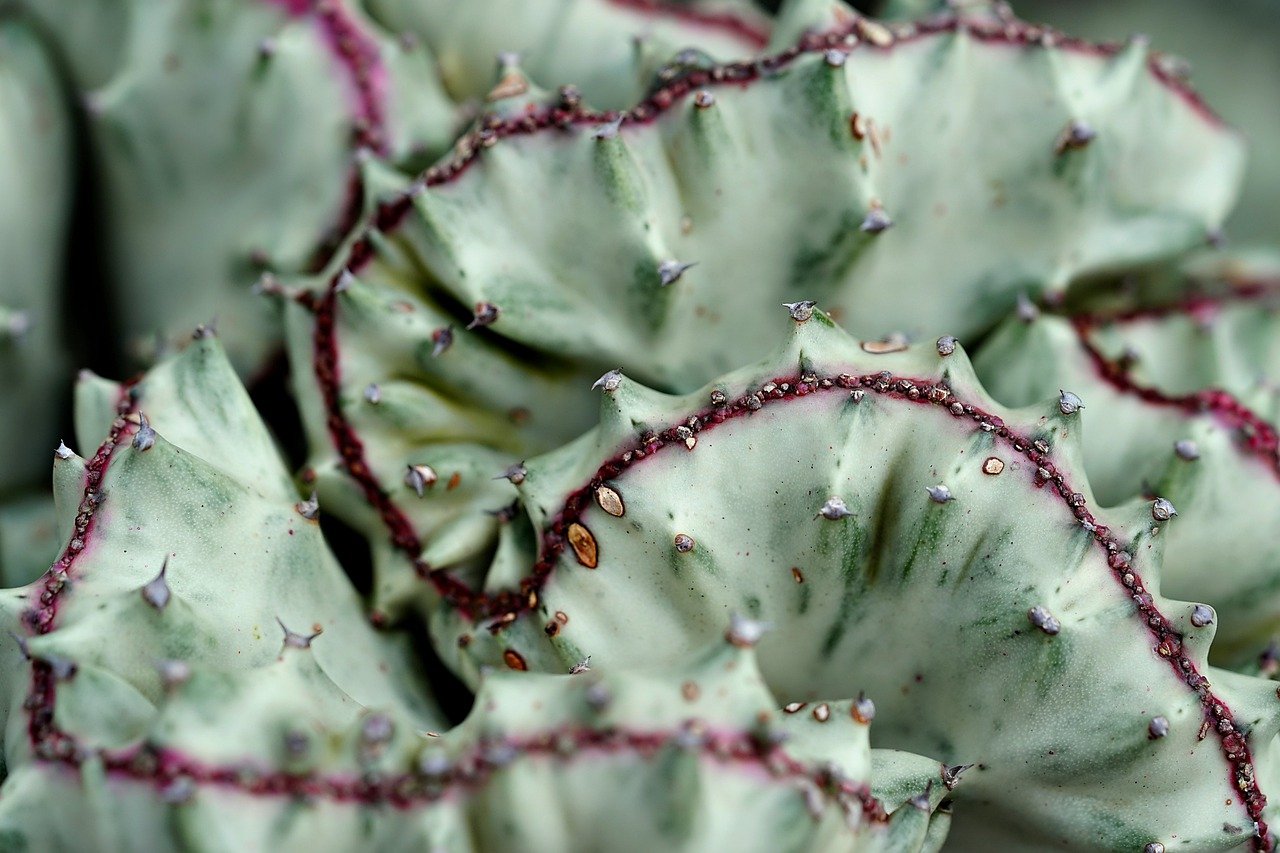
Understanding Bioluminescence
Bioluminescence is one of nature's most captivating phenomena, where living organisms emit light through a chemical reaction. Imagine walking through a forest at night, only to be mesmerized by the soft glow of mushrooms illuminating the ground beneath your feet. This enchanting spectacle is not just a figment of fantasy; it is a remarkable adaptation that has evolved over millions of years. The science behind bioluminescence involves a complex interplay of proteins, enzymes, and light-emitting molecules called luciferins. When these components react in the presence of oxygen, light is produced, often in hues of blue and green, which are the most visible wavelengths in dark environments.
Bioluminescence serves various purposes in the natural world. For some organisms, it is a means of attracting mates, while for others, it can be a defense mechanism to confuse predators or lure prey. This phenomenon is commonly observed in marine life, such as deep-sea fish and certain types of jellyfish, but it is also present in terrestrial species like fireflies and, of course, glowing fungi. The allure of these glowing organisms has sparked curiosity and wonder in humans for centuries, leading to extensive research into their properties and potential applications.
When it comes to creating a night garden, understanding bioluminescence is crucial. Not only does it enhance the aesthetic appeal of your outdoor space, but it also provides an opportunity to connect with nature on a deeper level. By incorporating bioluminescent plants into your garden, you can experience the magic of light in a way that is both beautiful and sustainable. Imagine hosting a gathering under the stars, with your garden aglow, creating an atmosphere that feels almost otherworldly. The possibilities are endless when you embrace the enchanting world of bioluminescence.
In summary, bioluminescence is a fascinating natural phenomenon that not only illuminates the dark but also enriches our understanding of the intricate relationships within ecosystems. As you delve deeper into the world of night gardens, you'll find that these glowing plants are more than just a visual treat; they are a testament to the wonders of evolution and the beauty of life itself.

Choosing the Right Plants
When it comes to creating a stunning night garden, the choice of plants is absolutely crucial. You want to select plants that not only glow in the dark but also thrive in your specific environment. Think of your night garden as a stage, where each plant plays its own role in the overall performance. To ensure that your garden dazzles after sunset, you need to consider several factors including light requirements, soil conditions, and climate suitability.
One of the first steps in choosing the right plants is to understand their bioluminescent properties. Not all plants that glow are created equal; some emit a soft glow, while others can be quite vibrant. For instance, certain species of glowing mushrooms can light up a dark corner of your garden with their ethereal luminescence, while bioluminescent algae can create an enchanting glow in water features. This leads us to the importance of knowing your garden's ecosystem and how each plant interacts with its environment.
To help you navigate through the choices, here are some popular bioluminescent plants that can elevate your night garden:
- Glowing Mushrooms: These fungi are not just visually stunning; they also add an element of mystery to your garden.
- Bioluminescent Algae: Perfect for ponds or water features, these algae can create an otherworldly glow.
- Glow-in-the-Dark Flowers: Some flowers, like the Night-Blooming Jasmine, can emit a soft glow, adding to the overall ambiance.
When selecting plants, it’s also essential to consider their growing conditions. For instance, glowing mushrooms prefer damp, shaded areas, while bioluminescent algae thrive in water that is rich in nutrients. Therefore, you should assess your garden's layout and microclimates to determine the best spots for these fascinating plants. A well-planned garden can lead to an eye-catching display that surprises and delights visitors.
Another aspect to keep in mind is the seasonality of your plants. Some bioluminescent plants may only glow during certain times of the year or under specific conditions, such as humidity or temperature. Therefore, it’s wise to choose a mix of plants that can provide a continuous display of light throughout the seasons. By doing so, you can create a night garden that remains captivating all year long.
In conclusion, choosing the right plants for your night garden is not just about selecting those that glow; it’s about creating a harmonious environment where each plant complements the others. By understanding their needs and characteristics, you can cultivate a magical space that transforms into a luminous wonderland after sunset.

Popular Bioluminescent Plants
When it comes to creating a night garden that truly captivates, the choice of bioluminescent plants is essential. These magical organisms not only add a unique aesthetic but also bring a sense of wonder to your outdoor space. Among the most popular bioluminescent plants are glowing mushrooms and certain types of algae, each offering their own spectacular display of light. Let's dive deeper into these enchanting plants and explore what makes them so special.
One of the most fascinating types of bioluminescent plants is the glowing mushroom. These fungi are not just ordinary mushrooms; they possess the remarkable ability to emit light in the dark, creating a surreal atmosphere in your garden. The light emitted by these mushrooms is due to a chemical reaction that occurs within their cells, making them a true marvel of nature. Species like Mycena chlorophos and Armillaria mellea are particularly well-known for their glow. They thrive in damp, shaded environments, often found in wooded areas. Cultivating these mushrooms in your garden can be a rewarding experience, as they not only light up the night but also contribute to the ecosystem by breaking down organic matter.
Another captivating addition to your night garden is bioluminescent algae. These tiny organisms can create stunning visual effects, especially when incorporated into water features like ponds or fountains. The light produced by bioluminescent algae, such as Pyrocystis fusiformis, is often triggered by movement in the water, leading to an enchanting display that resembles a starry sky reflected in your garden. To successfully integrate bioluminescent algae into your night garden, consider creating a small pond or water feature where they can thrive. Not only will this add a beautiful element to your landscape, but it will also serve as a habitat for various aquatic life.
In addition to glowing mushrooms and algae, there are other plants that exhibit bioluminescence, adding to the diversity of your night garden. For example, some species of fireflies and glow-in-the-dark plants, such as Chrysanthemum, have been genetically modified to emit light, creating an even more vibrant display. While these plants may not be naturally bioluminescent, their inclusion can enhance the overall glow of your garden.
When selecting bioluminescent plants for your garden, it's crucial to consider their growing conditions. Many of these plants prefer specific environments, such as shaded areas with high humidity. Understanding their needs will ensure that they thrive and produce the stunning light displays you desire. Remember, a successful night garden is not just about the plants; it's about creating an atmosphere that invites wonder and exploration.
To summarize, incorporating popular bioluminescent plants like glowing mushrooms and bioluminescent algae into your night garden can transform your outdoor space into a magical realm. With the right care and conditions, these plants will not only illuminate your garden after sunset but also create a unique ecosystem that is both beautiful and beneficial. So, are you ready to embark on this glowing adventure?
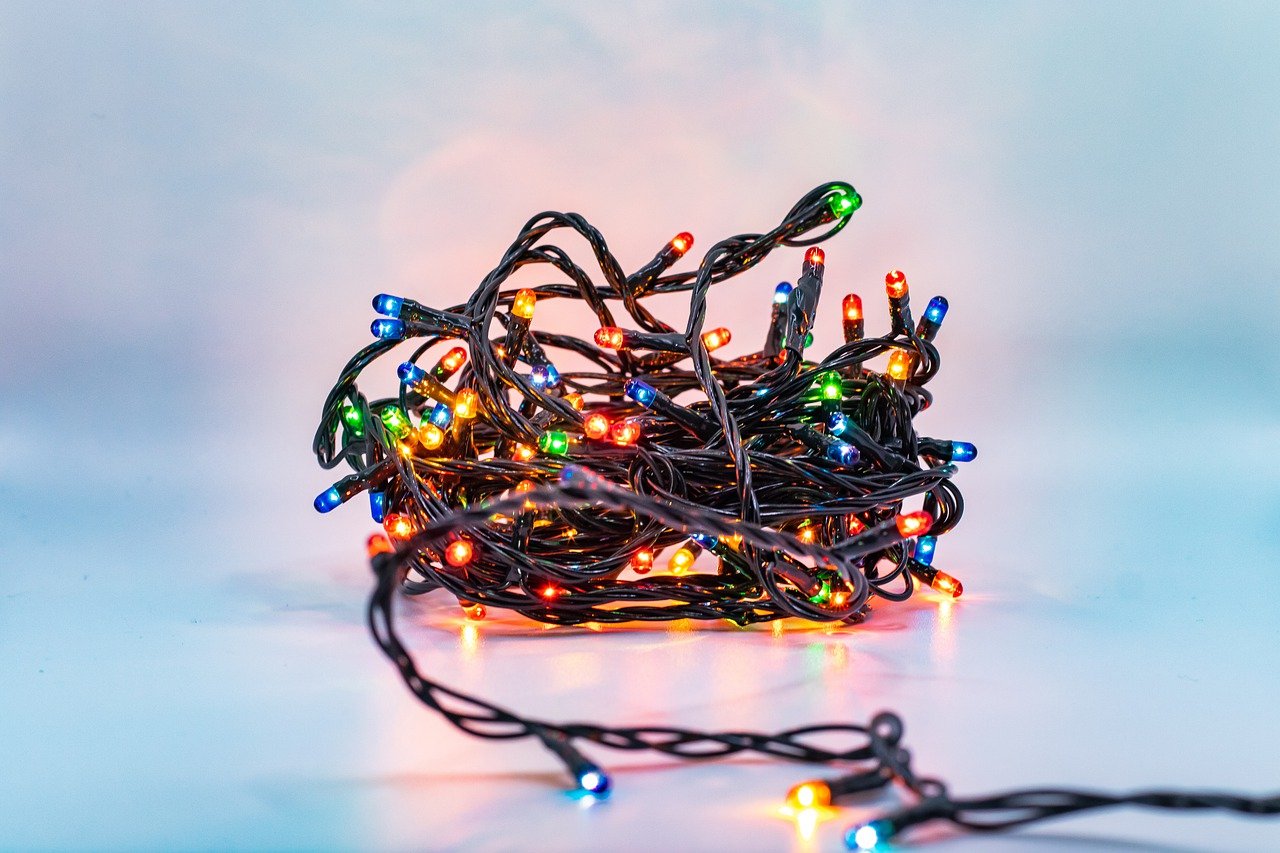
Glowing Mushrooms
Glowing mushrooms, also known as bioluminescent fungi, are nature's little lanterns, lighting up the forest floor with their ethereal glow. Imagine walking through a darkened woodland, the air filled with the earthy scent of damp soil, when suddenly, you spot a soft, greenish-blue light emanating from a cluster of mushrooms. It feels like stepping into a fairy tale, doesn’t it? These fascinating organisms have evolved to emit light, a phenomenon that can be attributed to a chemical reaction involving luciferin and luciferase. This natural glow not only captivates our imagination but also plays a crucial role in their life cycle.
Glowing mushrooms can be found in various habitats, thriving in moist, decaying wood or rich forest soil. Some of the most notable species include Armillaria mellea, commonly known as honey mushrooms, and the Mycena chlorophos, renowned for its bright luminescence. These mushrooms typically thrive in environments that mimic their natural habitat, which means that if you’re considering cultivating them in your night garden, you need to recreate those conditions. They prefer a shaded area with high humidity and a substrate rich in organic matter. Think of it as setting up a cozy little home for them, complete with all the amenities they desire!
To cultivate glowing mushrooms in your garden, you can follow these simple steps:
- Choose the Right Species: Select bioluminescent mushrooms that are suitable for your climate.
- Prepare the Substrate: Use a mix of hardwood sawdust and straw to create a nutrient-rich environment.
- Inoculate the Substrate: Introduce mushroom spores or spawn into the prepared substrate.
- Maintain Humidity: Keep the environment moist by misting regularly or using a humidity tent.
- Patience is Key: It may take several weeks for the mushrooms to colonize and start glowing.
One of the most enchanting aspects of glowing mushrooms is their ability to create an otherworldly ambiance. Imagine hosting a garden party where guests are mesmerized not just by the food and company, but also by the soft glow of mushrooms illuminating the pathways. It adds a magical touch that can transform an ordinary evening into an extraordinary experience. However, it's essential to remember that while these mushrooms are beautiful, not all species are edible. Always do your research before considering any for culinary use!
Incorporating glowing mushrooms into your night garden can be a delightful adventure, but it requires a bit of knowledge and care. By creating the right conditions and understanding their needs, you can enjoy the beauty of these luminous fungi. So why not take the plunge? Your garden could become a stunning nocturnal haven, filled with the gentle glow of mushrooms that light up the night!
Q: Are all glowing mushrooms edible?
A: No, not all glowing mushrooms are safe to eat. It's crucial to identify the species correctly before consumption.
Q: How long does it take for glowing mushrooms to start producing light?
A: It can take several weeks to months for mushrooms to fully colonize and start glowing, depending on the species and environmental conditions.
Q: Can I grow glowing mushrooms indoors?
A: Yes, you can grow certain species of glowing mushrooms indoors as long as you maintain the right humidity and light conditions.
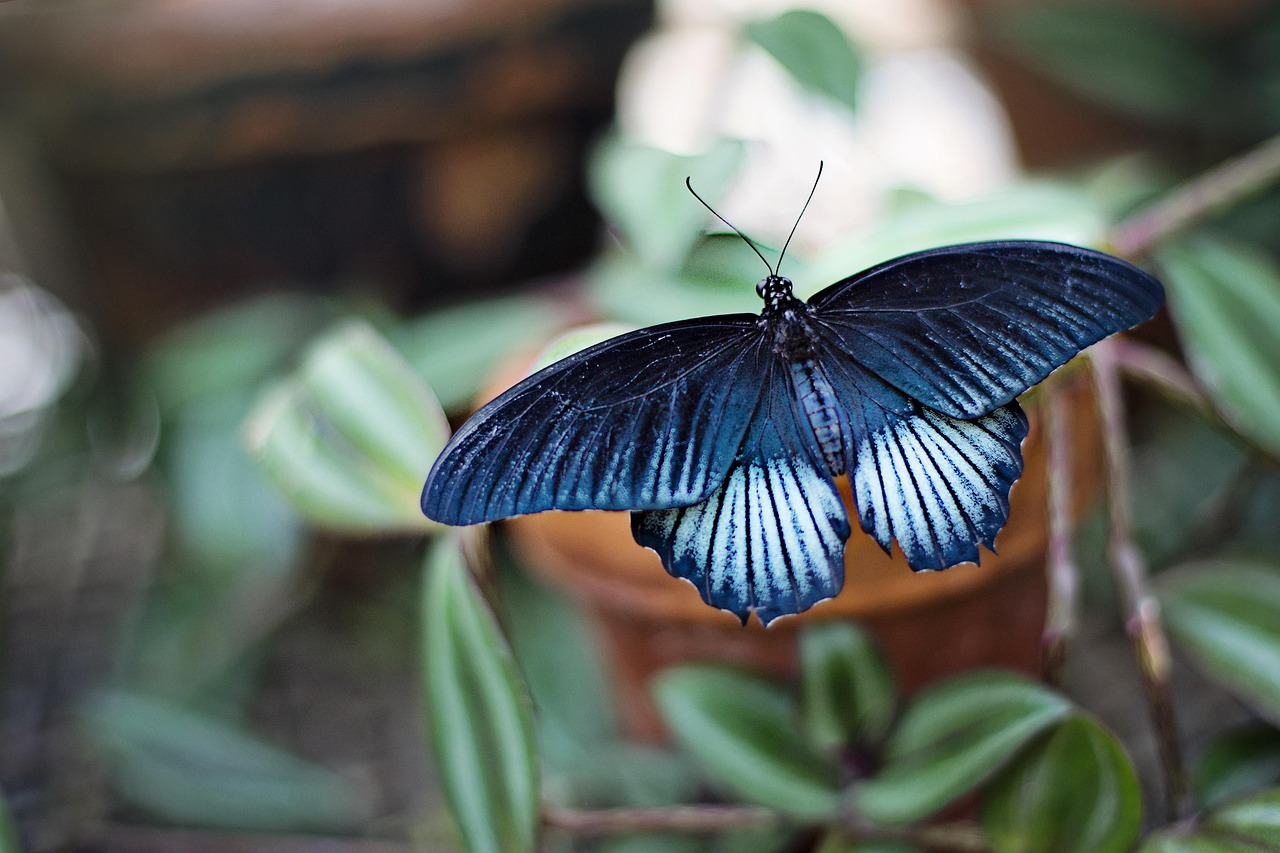
Bioluminescent Algae
Imagine strolling through your garden on a warm summer night, the air filled with the sweet scent of blooming flowers, and suddenly, you catch a glimpse of a shimmering blue glow emanating from your water feature. are not just a stunning visual spectacle; they are a magical addition that can transform any ordinary night garden into a mesmerizing wonderland. These tiny organisms, often found in coastal waters, possess the incredible ability to emit light through a chemical reaction, creating a breathtaking display that can leave anyone in awe.
So, how do these glowing algae work their magic? The phenomenon is primarily due to a compound called luciferin, which, when oxidized in the presence of oxygen, produces light. This natural glow can be triggered by movement, making it a perfect feature for ponds or water gardens where the gentle ripples of water can activate the glow. Picture this: as you lean over to admire your aquatic plants, the water shimmers with a soft, ethereal light, creating an enchanting scene that feels almost otherworldly.
To incorporate bioluminescent algae into your night garden, consider adding a small pond or a water feature. The key is to create an environment that mimics their natural habitat. Here are some essential factors to keep in mind:
- Water Quality: Bioluminescent algae thrive in clean, well-oxygenated water. Regularly test your water for pH and nutrient levels to ensure optimal conditions.
- Light Exposure: While these algae glow in the dark, they do need some sunlight during the day to thrive. A spot that receives partial sunlight is ideal.
- Temperature: Most bioluminescent algae prefer warmer waters. Aim for a temperature range of 20-25°C (68-77°F) for the best results.
One of the most popular types of bioluminescent algae is Pyrocystis fusiformis, which can be found in tropical and subtropical regions. This particular species is known for its bright blue glow and is often used in aquariums to create stunning displays. However, it’s essential to source these organisms responsibly, ensuring that they are harvested sustainably and ethically.
In addition to their beauty, bioluminescent algae can also serve as a fascinating educational tool. Imagine sharing the science behind their glow with friends and family, explaining how these tiny organisms contribute to the ecosystem. It’s a conversation starter that can spark curiosity and wonder, making your night garden not just a visual delight but also an engaging learning experience.
As you plan your night garden, consider how you can incorporate these glowing wonders into your design. Whether it’s a small pond illuminated by the glow of algae or a larger water feature that creates a stunning focal point, the possibilities are endless. Just remember, the key to success lies in creating the right environment for these magical organisms to thrive.
Q: How do I maintain bioluminescent algae in my garden?
A: Regular water quality checks, maintaining proper temperatures, and ensuring they receive adequate light are crucial for their health.
Q: Can I grow bioluminescent algae in a container?
A: Yes, you can grow them in a large container or aquarium, but make sure to provide the right conditions similar to their natural habitat.
Q: Are bioluminescent algae safe for fish and other aquatic life?
A: Generally, bioluminescent algae are safe for most aquatic life, but it's always best to research specific species before introducing them to your ecosystem.
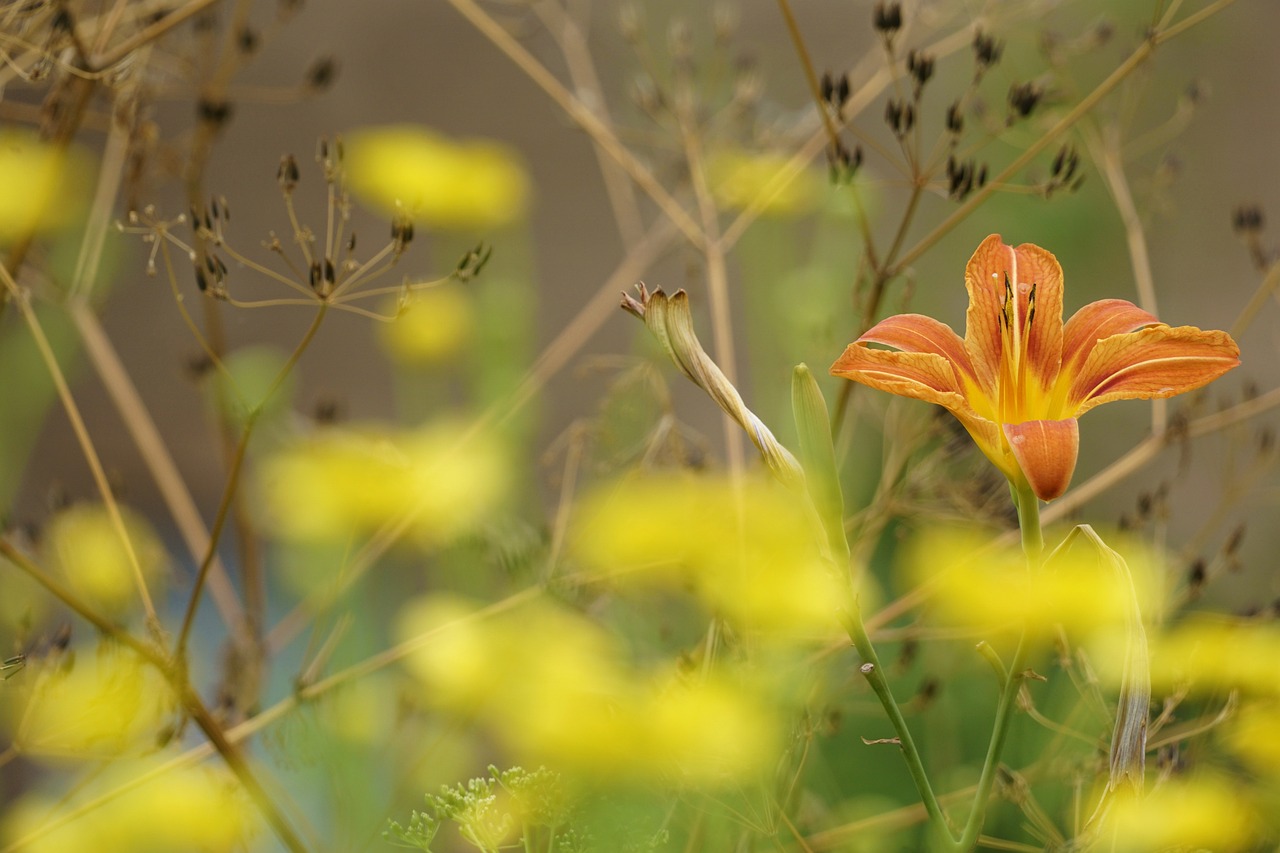
Designing Your Night Garden
Creating a night garden is like painting a masterpiece under the stars. The right design can transform your outdoor space into an enchanting realm that comes alive after sunset. Imagine walking through a garden where glowing plants illuminate your path, casting a soft, ethereal light that dances in the cool night air. To achieve this magical atmosphere, you need to consider several key elements that will enhance the beauty of your bioluminescent plants.
First and foremost, layout is essential. Think about the flow of your garden and how you want to guide visitors through this nocturnal wonderland. You might want to create winding paths that lead to focal points, such as a glowing mushroom cluster or a pond filled with bioluminescent algae. Using curves instead of straight lines can create a more organic feel, mimicking the natural patterns found in nature. Don’t forget to incorporate seating areas where you can sit back and enjoy the magical ambiance!
Next, consider the lighting. While the goal is to let your glowing plants shine, strategically placed soft lighting can enhance the overall experience. Use solar-powered lanterns or fairy lights to illuminate pathways without overpowering the natural glow of your plants. Position these lights to create shadows and highlights that will add depth and intrigue to your garden. You might even want to experiment with colored lights to create a whimsical atmosphere. Just remember, the key is to complement, not compete with, the natural luminescence.
Another important aspect is to select complementary plants. While the stars of your night garden are the bioluminescent species, surrounding them with plants that thrive in low light can create a lush backdrop. Consider using shade-loving plants such as ferns or hostas, which can provide texture and contrast. Their deep greens will make your glowing plants pop even more. Additionally, plants with silvery or light-colored foliage can reflect moonlight, enhancing the overall glow of your garden.
Finally, don’t overlook the seasonal changes. A night garden can be a year-round delight if you choose plants that bloom at different times. Incorporating plants that flower in various seasons will keep your garden vibrant and engaging throughout the year. You might even add some fragrant night-blooming flowers like evening primrose or jasmine, which will not only look beautiful but also fill the air with delightful scents that come alive at night.
In summary, designing a night garden is about creating a harmonious space where bioluminescent plants can shine. With thoughtful layout, strategic lighting, complementary plant choices, and an eye on seasonal diversity, you can craft an enchanting outdoor experience that will leave everyone in awe. So, grab your gardening gloves and get ready to bring your nighttime vision to life!
- What are the best bioluminescent plants for a night garden? Some popular choices include glowing mushrooms and bioluminescent algae.
- How do I maintain the glow of my plants? Regular care, including proper watering and soil management, is essential for keeping your plants healthy and vibrant.
- Can I incorporate non-bioluminescent plants in my night garden? Absolutely! Non-bioluminescent plants can provide texture and contrast, enhancing the overall aesthetic of your garden.
- What kind of lighting should I use in my night garden? Soft, solar-powered lights or fairy lights work well to enhance the glow of your plants without overpowering them.

Maintenance of Night Gardens
Maintaining a night garden is like nurturing a delicate dreamscape; it requires a blend of care, knowledge, and a sprinkle of magic. Just as a painter chooses the right colors to create a masterpiece, you must pay attention to the specific needs of your glowing plants to keep them vibrant and healthy. The enchanting glow of bioluminescent plants can only be fully appreciated when they are well cared for, so let’s dive into the essential maintenance practices that will ensure your night garden remains a captivating oasis.
First and foremost, understanding the unique watering and soil requirements of bioluminescent plants is crucial. These plants often thrive in specific conditions that mimic their natural habitats. For example, glowing mushrooms may prefer a damp, shaded environment, while bioluminescent algae require clean, nutrient-rich water. It's essential to monitor the moisture levels in your garden, making sure not to overwater, as soggy soil can lead to root rot. A good rule of thumb is to check the soil moisture by sticking your finger about an inch into the soil; if it feels dry, it’s time to water.
When it comes to soil, bioluminescent plants generally prefer well-draining, organic-rich mixes. Consider creating a custom soil blend that includes components like peat moss, compost, and perlite to enhance drainage and nutrient retention. You might be surprised how a simple change in soil can make your plants glow even brighter!
Another aspect of maintenance involves pest management. Just like a knight protects their castle, you must shield your night garden from common pests that can threaten the health of your glowing plants. Instead of reaching for harsh chemicals, consider eco-friendly methods that are kinder to the environment. For instance, introducing beneficial insects such as ladybugs can help control aphid populations naturally. Additionally, using neem oil or insecticidal soap can effectively deter pests without harming your plants or the surrounding ecosystem.
Regularly inspecting your plants for signs of distress is also vital. Look for yellowing leaves, unusual spots, or any signs of pests. Early detection can make a world of difference, allowing you to take action before a small issue turns into a larger problem. Remember, a healthy garden is a happy garden!
Lastly, don’t forget about the importance of pruning and fertilizing. Pruning helps to remove any dead or diseased foliage, encouraging new growth and maintaining the overall aesthetic of your garden. When it comes to fertilization, opt for organic options that can provide the necessary nutrients without overwhelming your plants. A balanced fertilizer applied during the growing season can help your bioluminescent plants thrive, ensuring they shine brightly when night falls.
In summary, maintaining a night garden is not merely a chore; it’s an art form that requires patience and dedication. By understanding the watering and soil needs, managing pests organically, and implementing regular care routines, your glowing plants will flourish, creating a mesmerizing atmosphere that enchants all who visit. So, roll up your sleeves and get ready to nurture your little slice of nighttime magic!
- What are bioluminescent plants? Bioluminescent plants are living organisms that emit light through biochemical reactions, creating a magical glow in the dark.
- How do I care for glowing mushrooms? Glowing mushrooms thrive in damp, shaded areas with well-draining soil. Regular misting can help maintain humidity.
- Can I grow bioluminescent algae in my garden? Yes! Bioluminescent algae can be incorporated into water features like ponds or fountains for stunning visual effects.
- What pests are common in night gardens? Common pests include aphids, slugs, and snails. Using beneficial insects and organic treatments can help manage these issues.
- How often should I water my night garden? Watering needs vary by plant, but generally, you should check the soil moisture regularly and water when it feels dry.
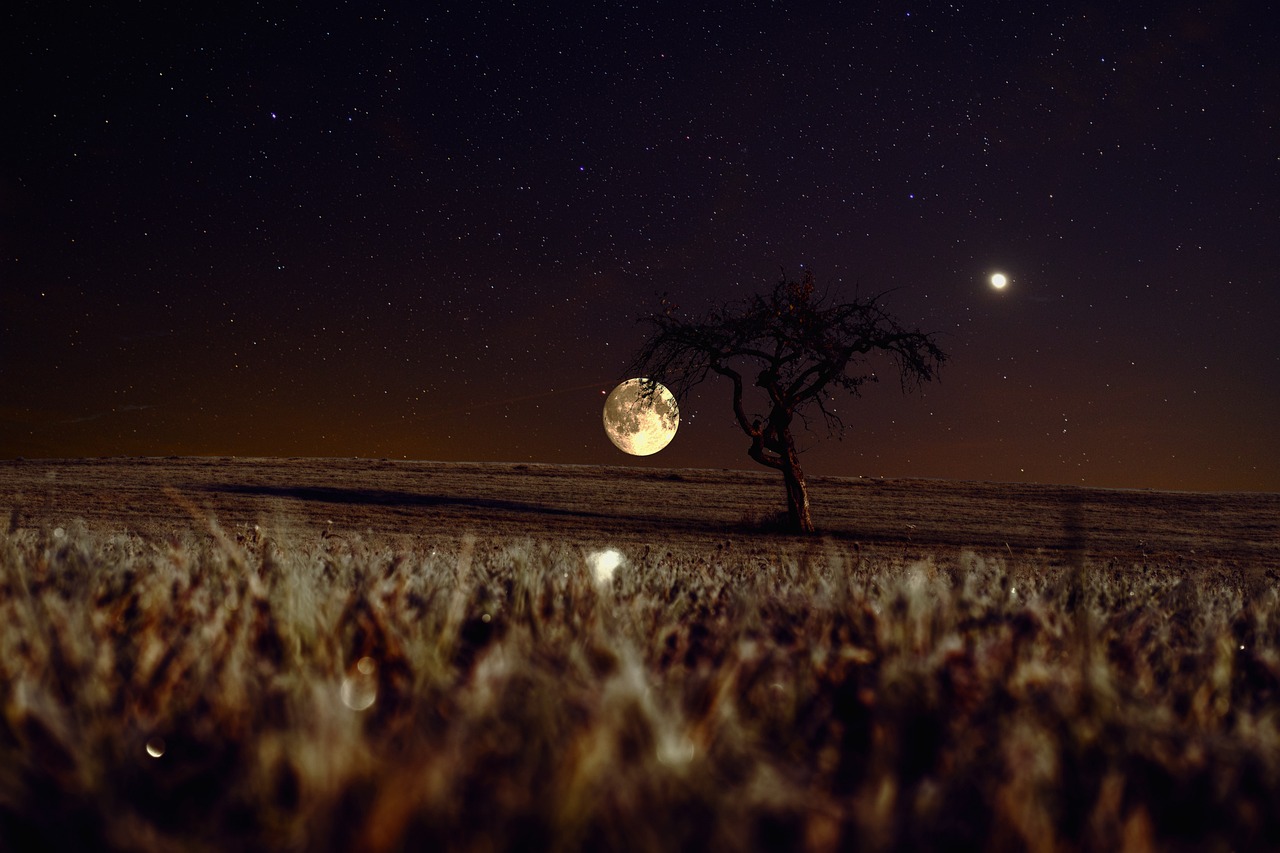
Watering and Soil Requirements
When it comes to creating a thriving night garden filled with bioluminescent plants, understanding watering and soil requirements is essential. Just like us, plants have specific needs that must be met to ensure they flourish and glow in all their glory. Think of it this way: if you were to host a midnight party, you wouldn’t want your guests to be uncomfortable or unappreciated, right? Similarly, your plants require the right conditions to thrive.
First and foremost, let's talk about watering. Bioluminescent plants, much like their daytime counterparts, have varying water needs. Some thrive in moist soil, while others prefer a more arid environment. A general rule of thumb is to keep the soil consistently moist but not soggy. Overwatering can lead to root rot, which is a sure way to dim the glow of your garden. To gauge the moisture levels, you can stick your finger about an inch into the soil; if it feels dry, it’s time to water. However, if it’s still damp, hold off for a bit longer.
Now, let’s dive into the soil requirements. The right soil can make all the difference in the world. Most bioluminescent plants prefer well-draining soil that allows excess water to escape while retaining enough moisture for the roots. A mixture of potting soil, peat moss, and perlite can create the perfect environment. Here’s a simple breakdown:
| Soil Component | Purpose |
|---|---|
| Potting Soil | Provides nutrients and a base for plant growth. |
| Peat Moss | Helps retain moisture while improving soil structure. |
| Perlite | Enhances drainage and aeration. |
In addition to the right soil mix, ensure that the pH level is suitable for your plants. Most bioluminescent plants thrive in slightly acidic to neutral pH levels, around 6.0 to 7.0. You can easily test your soil's pH using a simple kit available at gardening stores. Adjusting the pH can be done with amendments like lime (to raise pH) or sulfur (to lower pH).
Lastly, remember that the growing conditions can vary based on the specific types of bioluminescent plants you choose. For example, glowing mushrooms often prefer shaded, damp environments, while bioluminescent algae require a water feature with gentle circulation. Always research the specific needs of your plants to create an optimal environment.
In summary, keeping your night garden vibrant and glowing involves a careful balance of watering and soil management. Pay attention to the moisture levels, choose the right soil mix, and maintain a suitable pH level. With these practices, your enchanting night garden will surely be a stunning spectacle under the moonlight!
- How often should I water my bioluminescent plants? - Water them when the top inch of soil feels dry, ensuring not to overwater.
- What type of soil is best for glowing mushrooms? - A mix of potting soil, peat moss, and perlite works well.
- Can I grow bioluminescent plants indoors? - Yes, with proper lighting and humidity control, many bioluminescent plants can thrive indoors.

Pest Management
Pest management is a crucial aspect of maintaining the health and vibrancy of your night garden. After all, who wants their enchanting glowing plants to be dimmed by pesky intruders? It's essential to take a proactive approach, using eco-friendly methods that not only protect your plants but also support the surrounding ecosystem. Think of your night garden as a delicate balance of light and life, where every creature plays a role. By implementing natural pest management strategies, you can ensure that your garden remains a magical retreat.
One effective way to manage pests is through the introduction of beneficial insects. Ladybugs, for instance, are natural predators of aphids, which can wreak havoc on your plants. By inviting these helpful critters into your garden, you can create a natural defense system. Additionally, planting a variety of flowers can attract these beneficial insects. Consider adding plants like marigolds and yarrow, which not only enhance the beauty of your night garden but also serve as a beacon for helpful pollinators.
Another method to consider is the use of organic sprays. These can be made from simple household ingredients, such as soap and water, or even garlic and chili pepper. Not only are these solutions effective, but they are also safe for the environment. Regularly spraying your plants with these mixtures can deter unwanted pests without harming beneficial insects. Remember, a little prevention goes a long way in keeping your glowing plants healthy.
Furthermore, maintaining proper hygiene in your garden is vital. Regularly removing dead leaves and debris can prevent pests from finding a cozy home in your garden. Think of it as decluttering your space; a tidy garden is less appealing to pests. Additionally, rotating your plants and avoiding monoculture can help disrupt pest life cycles, making it harder for them to establish themselves.
In conclusion, managing pests in your night garden doesn't have to be a daunting task. By embracing eco-friendly practices and fostering a balanced ecosystem, you can create a thriving environment for your bioluminescent plants. Remember, the goal is to create a harmonious space where both plants and beneficial insects can flourish. With a little effort, your night garden can remain a luminous sanctuary, free from the shadows of pests.
- What are bioluminescent plants? Bioluminescent plants are those that can produce and emit light, creating a magical glow, especially at night.
- How can I attract beneficial insects to my garden? Planting a variety of flowering plants, such as marigolds and yarrow, can attract beneficial insects that help control pests.
- Are organic pest control methods effective? Yes! Organic methods, such as using homemade sprays or introducing beneficial insects, can be very effective in managing pests.
- How often should I check my plants for pests? It's a good practice to check your plants at least once a week to catch any pest problems early.
Frequently Asked Questions
- What exactly is bioluminescence?
Bioluminescence is a natural phenomenon where living organisms emit light. This enchanting process occurs in various species, including certain plants, fungi, and marine life, allowing them to glow in the dark. It's like nature's own light show, where some organisms have evolved over time to produce light through biochemical reactions!
- Which plants are best for creating a night garden?
When it comes to night gardens, you want to choose plants that not only glow but also thrive in your local environment. Popular options include glowing mushrooms and bioluminescent algae. These plants can create a magical atmosphere, especially when planted near water features where algae can really shine!
- How do I take care of bioluminescent plants?
Taking care of bioluminescent plants involves understanding their specific needs. Regular watering, ensuring well-draining soil, and providing the right amount of light are crucial. It's like nurturing a delicate friendship; you need to pay attention to their needs to keep them healthy and glowing!
- Can I incorporate glowing plants in my existing garden?
Absolutely! You can enhance your existing garden by adding bioluminescent plants. Just ensure that they are compatible with your current plants and that their growing conditions align. Think of it as adding a new member to your gardening family who brings a little extra sparkle!
- What are some eco-friendly pest management methods?
Managing pests in your night garden can be done using eco-friendly methods like introducing beneficial insects, using organic sprays, or even creating barriers. This way, you protect your glowing plants without harming the environment. It's like being a superhero for your garden, fighting off pests while keeping it green!
- Do bioluminescent plants require special lighting?
Most bioluminescent plants do not need special lighting to glow; they naturally emit light. However, providing them with adequate light during the day can help enhance their glow at night. Think of it as charging a battery—give them the right amount of light, and they'll shine bright when the sun goes down!
- Are bioluminescent plants safe for pets?
Generally, bioluminescent plants are safe for pets, but it's always best to check specific species. Some plants may have varying effects on animals. If you're unsure, consult with a vet or do a little research to keep your furry friends safe while enjoying the glow!



















